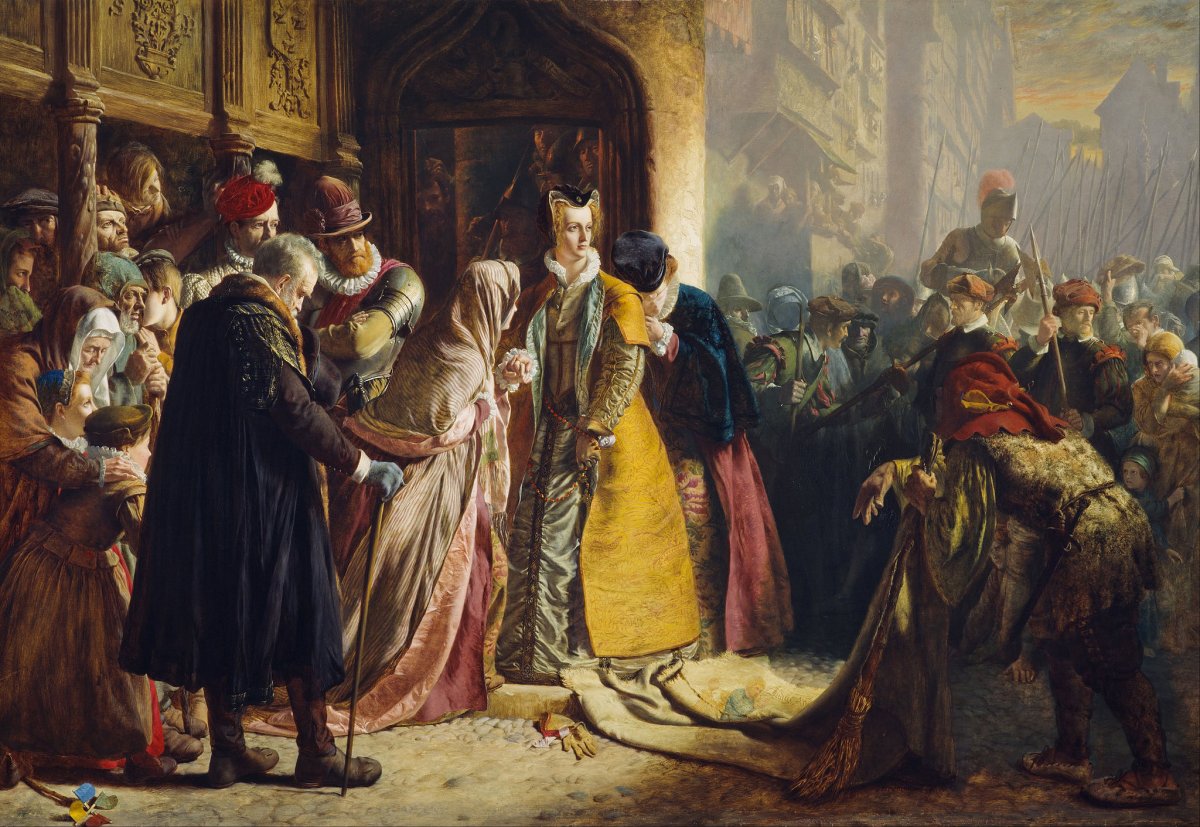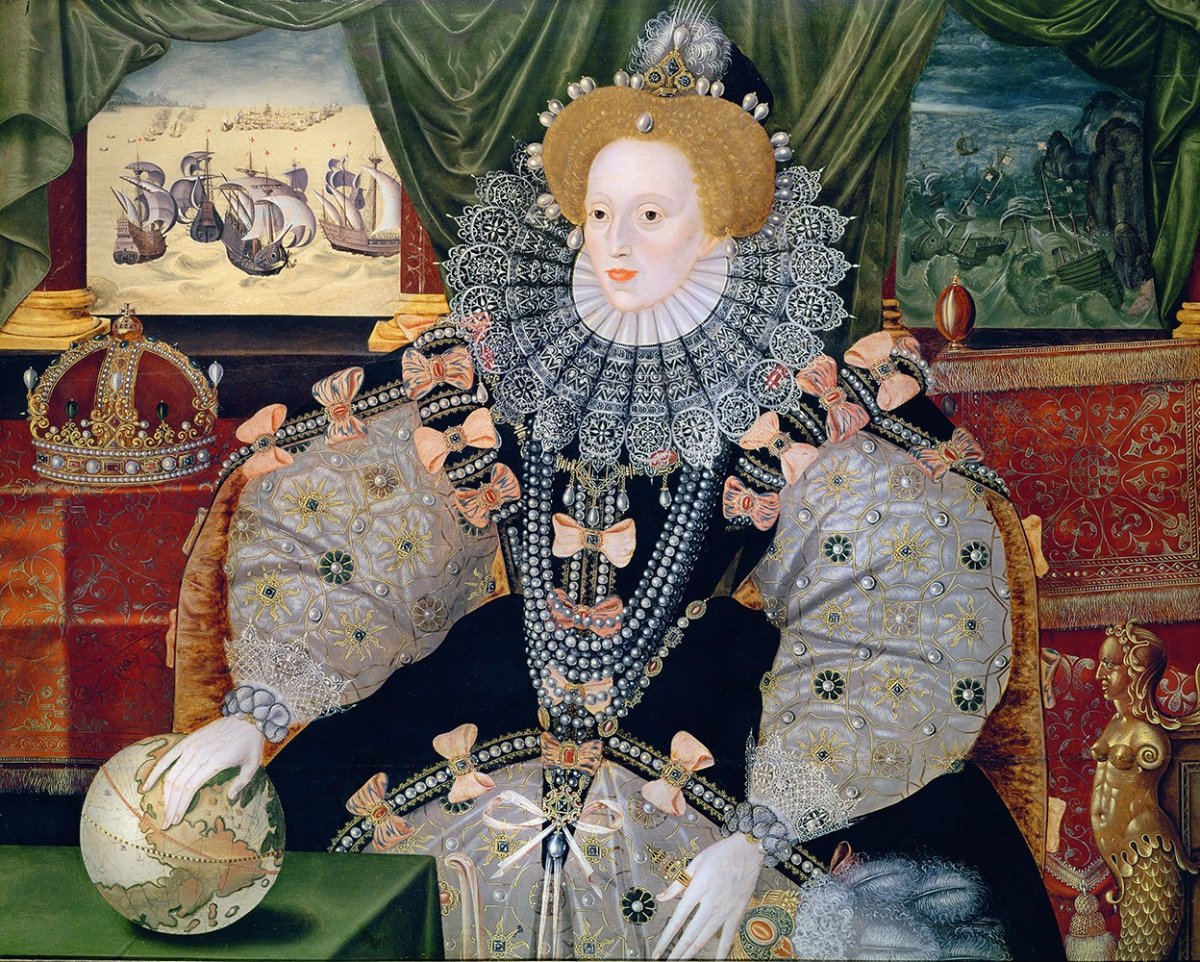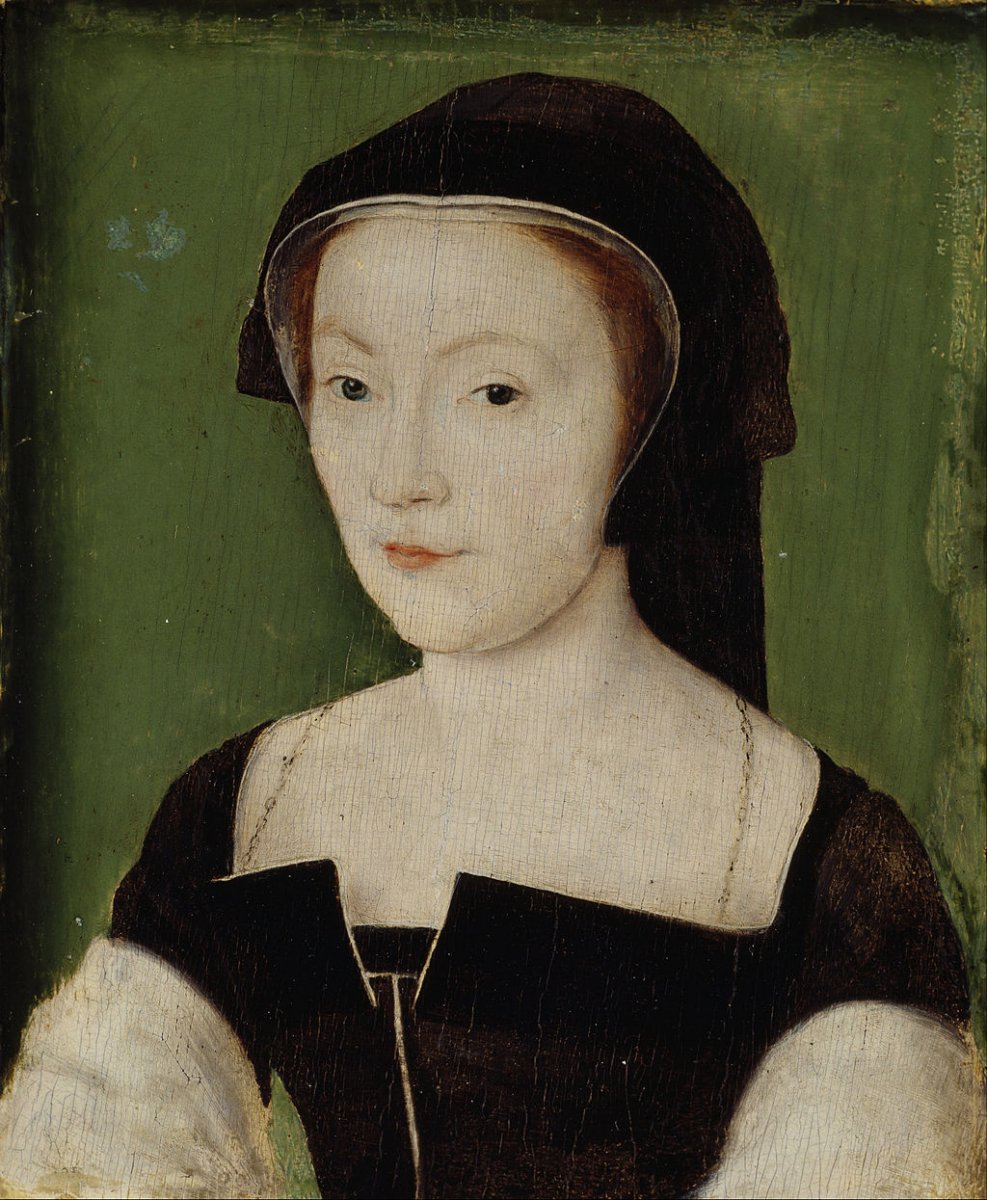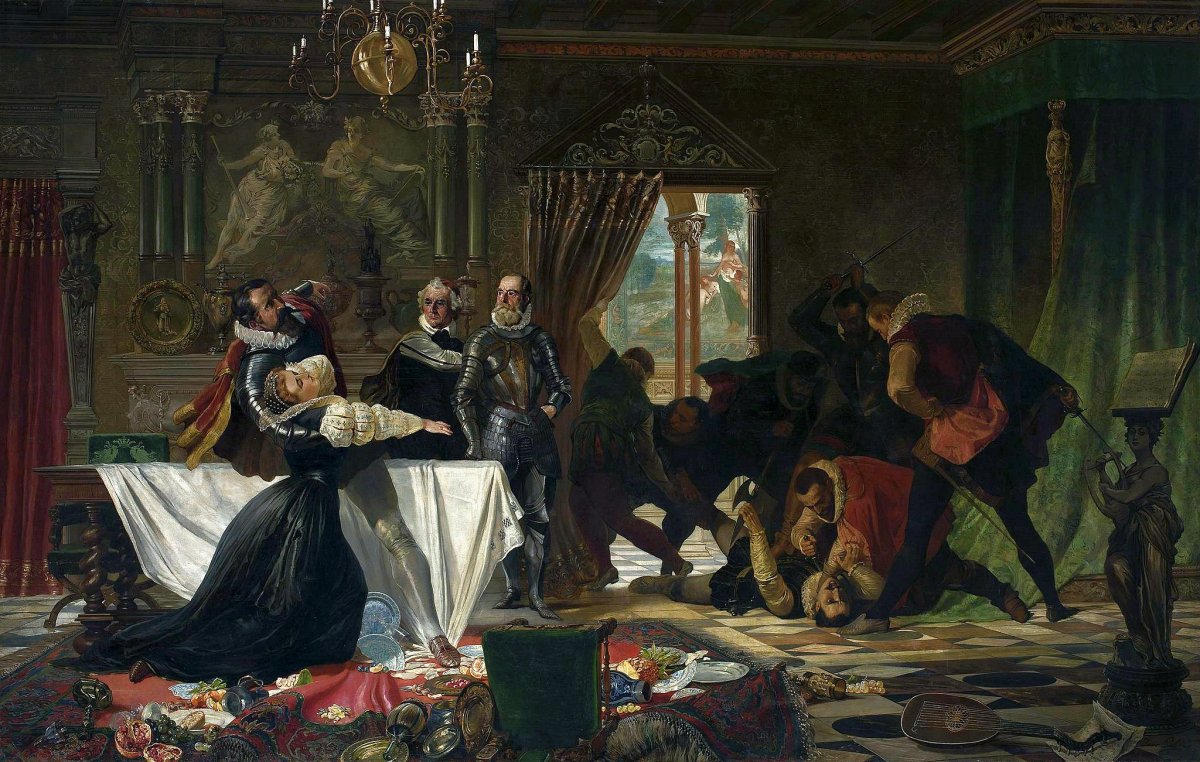“How cruel men are…”
This remark by Elizabeth I sums up perfectly the heart and soul of Mary Queen of Scots (2018). The film is a testament to women in power, the lengths to which men will go to take it away from them, and to the complicated politics of one’s immortal soul. Director Josie Rourke reminds the viewer time and again just how effective period pieces can be in telling a modern story.
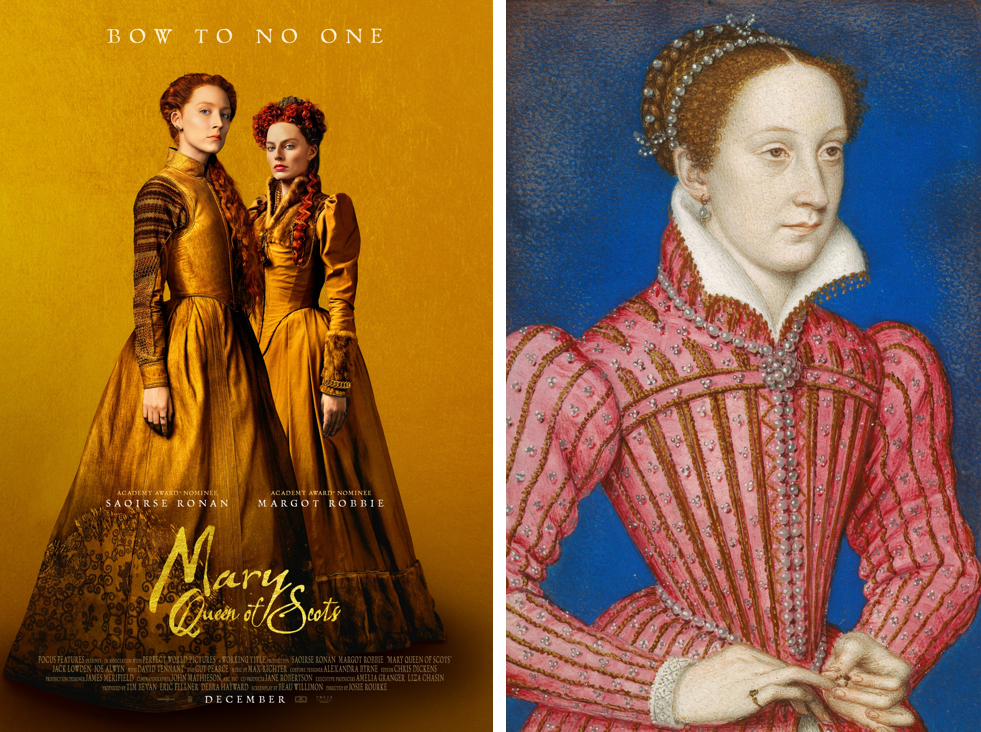
Mary, Queen of Scots (2016), Josie Rourke (left). A portrait of the titular Mary, Queen of Scots (right).
This film focuses on two female monarchs pitted against each other in a typically male political game. The ill-fated story of Elizabeth I (Margo Robbie) and Mary, Queen of Scots (Saoirse Ronan) provides a vivid historical background that features the challenges women face in a patriarchal society. This is the real strength of the film—a historical piece that highlights women’s bravery and strength in the past and exemplifies it in the present. History is expertly woven throughout this film but never suffocates it.
Set in 1561, the film begins with Mary’s return to Scotland after the death of her French husband, Francis II. Mary lands on the shores of her kingdom amid a brutal struggle for religion.
Just two years earlier, John Knox and the Lords of the Congregation led a revolt against Mary’s mother and regent, Marie of Guise. The Reformation crisis of 1559 culminated with the reformers capturing Edinburgh, burning the religious houses, and declaring Catholicism illegal. Marie died during this revolt, leaving Mary’s illegitimate half-brother the Earl of Moray to rule.
The film begins with Mary’s return to Edinburgh–portrayed here–following the death of her husband, Francis II of France.
The film deals with the repercussions of this revolt and the tumultuous overthrow of religion. The specter of Protestantism constantly looms over a Catholic Mary, threatening her throne and her life. This threat ties directly to Mary’s sister monarch, Elizabeth I of England, who is a Protestant.
Elizabeth is a supporting character in this film, but her role never disappoints. Her constant internal struggles with marriage, motherhood, and her mortality drive her contempt/admiration of Mary. Elizabeth seems obsessed with her own vanity as compared to Mary but comes to learn that beauty does not matter in this world of men.
Mary’s great rival, Elizabeth I, is portrayed here following her famous victory over the Spanish Armada.
Elizabeth famously never married nor produced an heir, but she used the men around her as political pawns in her marriage game. Elizabeth’s singleness and her childlessness are portrayed as central to her character. Rourke even goes so far as to cut Mary’s childbirth scene with a scene of Elizabeth sprawled out on the floor with hundreds of red paper roses between her legs.
The movie presents the two queens as juxtapositions of womanhood with the same goal in mind. One queen with roles also of mother and wife and another whose position as queen is all-encompassing. The movie judges both equally. Each woman is unhappy in her own way and, for both, their woes stem directly from men.

Margot Robbie and Saoirse Ronan portray Elizabeth I and Mary Queen of Scots, respectively.
The reality of being powerful women in a male world eventually kills them. In Mary’s case, the men around her conspire and plot, ultimately resulting in her execution at the hands of the English. Elizabeth survives but “relinquishes [herself] fully to the throne.” Not a single piece of her womanhood remains because the men at court have stripped her of that virtue. She often refers to herself as a man.
The film cleverly uses John Knox’s famous polemic First Blast of the Trumpet Against the Monstrous Regime of Women (1558) to highlight this constant male scrutiny. Knox (David Tennant) delivers sermons throughout the film that pull from this work. He is the mouthpiece of the men in the film who feel threatened by powerful women.
In this painting by William Hole, John Knox, who, in the film, serves as a representative of the men threatened by powerful women such as Mary and Elizabeth, watches as Mary travels from the Castle to Holyroodhouse.
This is also a story of the sixteenth century when female monarchs were a new phenomenon in Europe. The sixteenth century was ushered in with Isabella I of Castile securely on the throne alongside her husband Ferdinand II of Aragon. Her granddaughter, Mary I of England became the first woman to reign in her own right in the British Isles. Elizabeth I and Mary, Queen of Scots would be the next generation of female rulers.
Mary of Guise, Mary Queen of Scots’ mother and regent.
All of these female monarchs in the British Isles were met with disdain, political strife, and religious upheaval. No queen knew these troubles more so than Mary, Queen of Scots. The Reformation and her disloyal nobles forced her to abdicate in 1567. She fled to England in search of a safe haven from her fellow queen. The two queens meet in person during the film’s climax, though that never actually happened. This license does not detract, however. Their meeting was necessary to the character building and ultimate message the movie wanted to convey.
In the sixteenth century, having a woman in power was unwelcome and evoked fear. Men struggled with sharing power at that level and often turned to violence to return power to male hands. From Mary’s nobles brutally killing her secretary David Rizzio in her presence to forcing her to marry the Earl of Bothwell, it was clear they wanted to strip her of power.
The painter Jean Lulvés’ portrayal of the murder of David Rizzio, Mary’s secretary.
Their actions in history and in the film reinforce the myth that women were out of their league when they try to act with power. But, by telling us a story of two strong female monarchs who wielded power and agency, Josie Rourke shows us what men are capable of doing to retain power.
History is central to this film because it gives a timeless nature to this all too familiar rhetoric. In this way, Rourke has revitalized the period piece by using colorblind casting, LGBTQ storylines, and evoking the feeling of the time rather than copying it.
French painter Abel de Pujol’s painting of The execution of Mary, Queen of Scots.
The stark images of Mary or Elizabeth being the woman in a room full of men are some of the most powerful in the movie. Five hundred years later, women holding powerful positions in a male-dominated society is still met with a similar resistance to what Mary and Elizabeth experienced.

